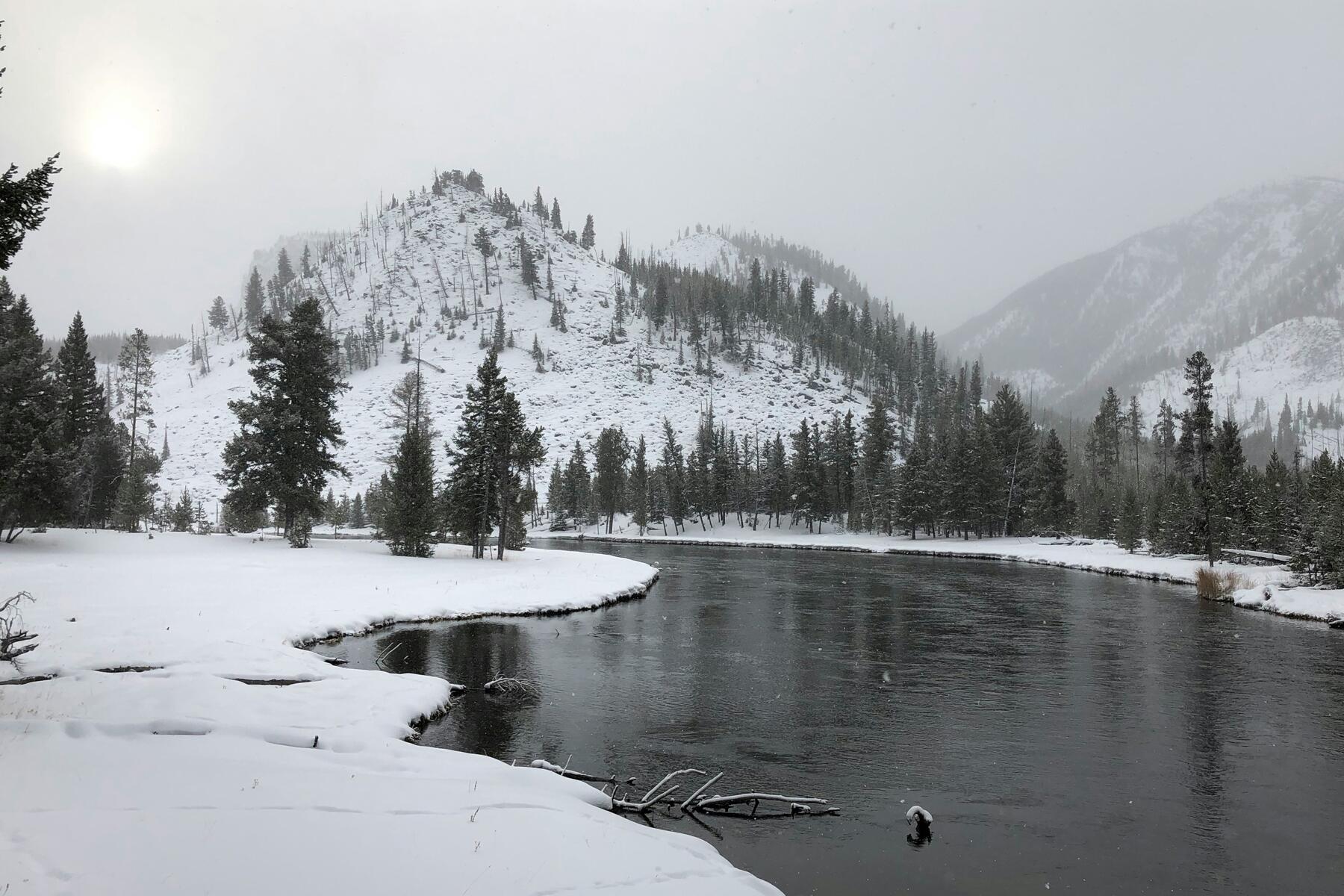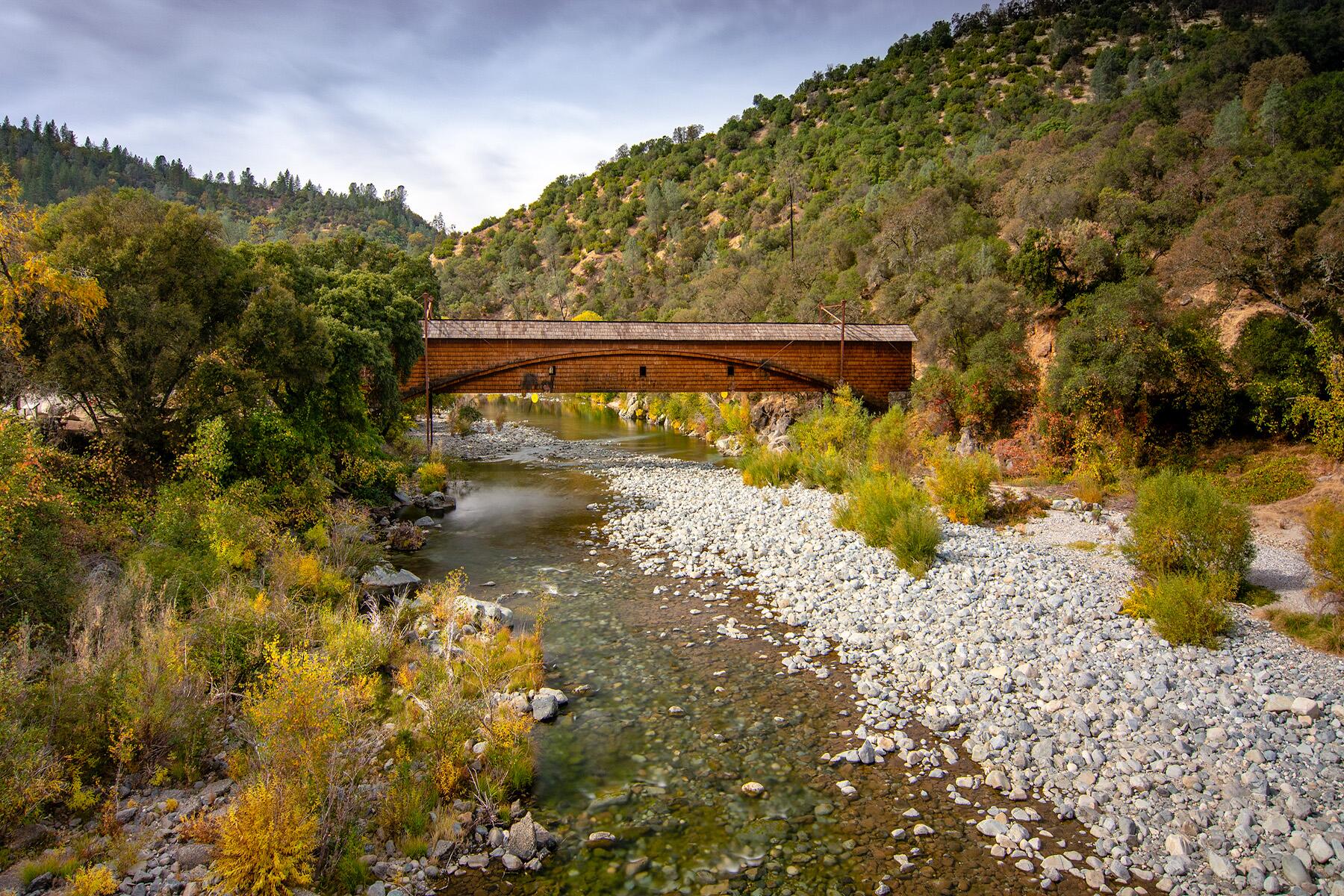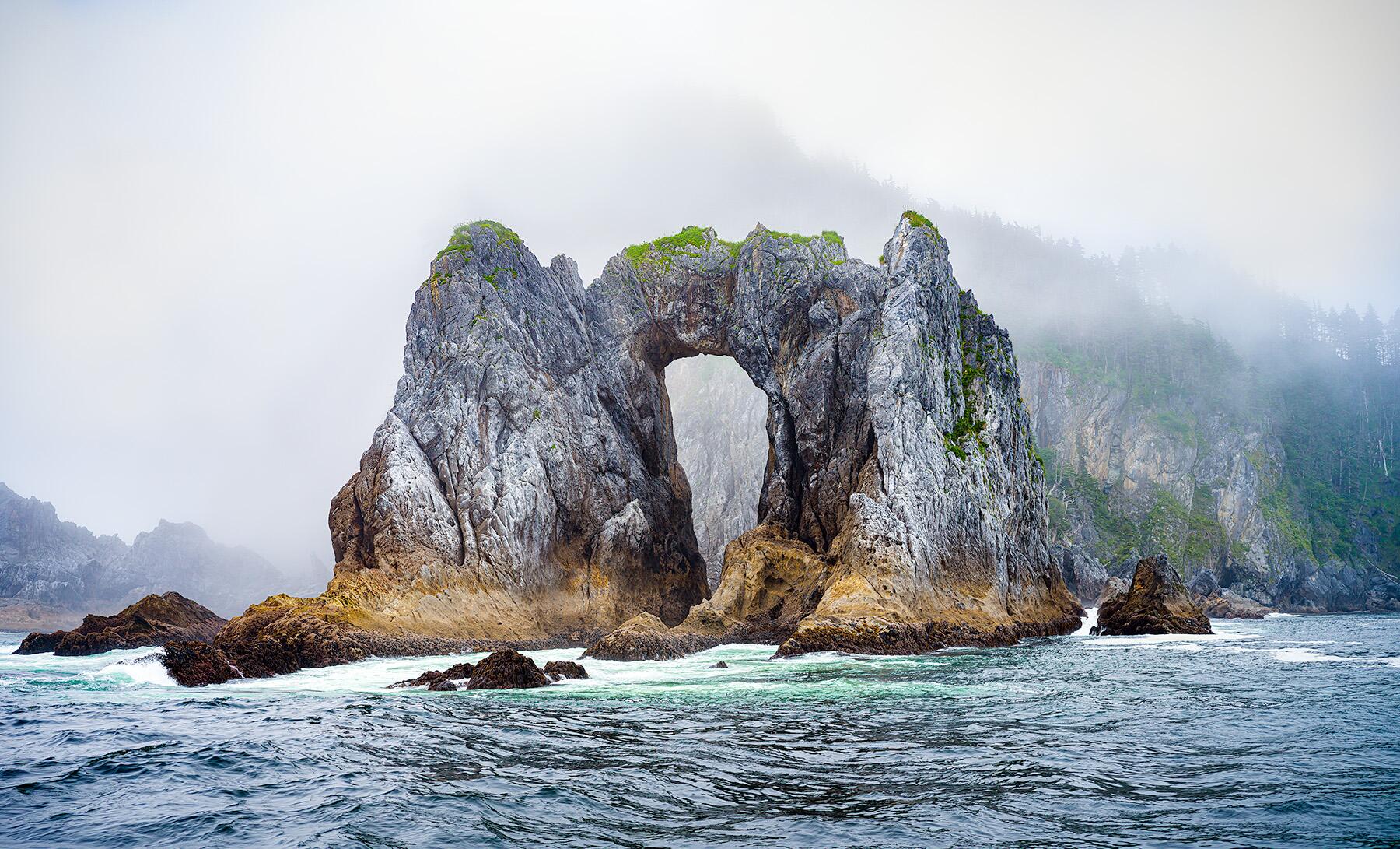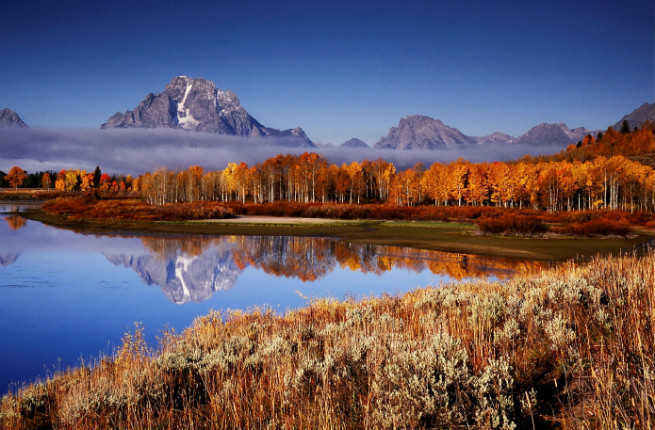
Come autumn, many of America’s national parks are at their most visually stunning. It’s not only the fall foliage that amplifies their beauty, but also the waning light casting the landscape in an almost magical iridescence. And after the heat of summer, the crisp air offers a welcome reprieve. Whether you prefer to drive through or hike through, these parks will prove unforgettable. Check out our picks for the ten must-visit national parks in the fall, with tips on what makes these places so special this time of year, from wildlife activity to fewer crowds.
By Jayme Moye
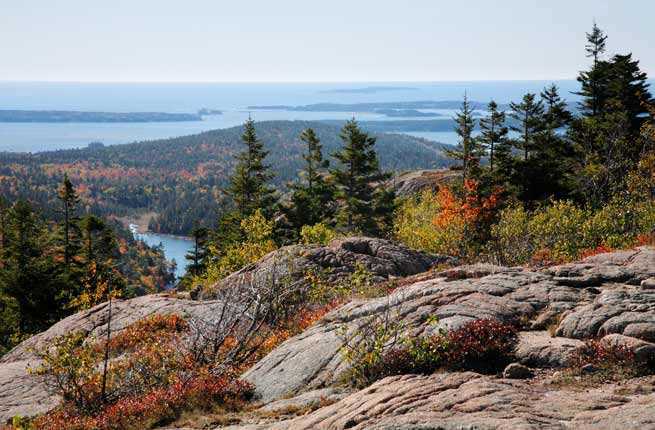
Acadia National Park
Maine
The historic, unpaved carriage roads in Acadia National Park are closed to motorized vehicles, making for an idyllic setting to hike or bike the park’s blazing reds, oranges, and yellows afforded by maple, birch, and poplar trees. Alternately, you can drive the scenic loop along the rocky coastline. We recommend doing both.
Insider Tip: Drive 3.5 miles to the top of Cadillac Mountain at 1,530 feet, the highest point along the North Atlantic seaboard and the first place in the U.S. to see the sunrise from October 7 to March 6, but note that the road up the mountain is closed from December through mid-May.
PLAN YOUR TRIP: Visit Fodor’s Acadia National Park Travel Guide

Crater Lake National Park
Oregon
The deep blue abyss of Crater Lake National Park collects in a dormant volcano crater surrounded by 2,000-foot cliffs. This is a breathtaking sight that’s set in a harsh environment with a very short window for visits. Even in July, there’s still snow on some of the hiking trails, and by mid-October you’re too late—it’s already winter again. The best time to visit is September, when the weather is crisp and the summertime tourists are long gone.
Insider Tip: Crater Lake closes East Rim Drive to motorized vehicles during the third weekend of every September. Guests can walk, hike, bike, or run along the rim of the deepest lake in the U.S. without any car traffic.
PLAN YOUR TRIP: Visit Fodor’s Crater Lake National Park Travel Guide

Grand Teton National Park
Wyoming
The Tetons have large stands of deciduous trees—cottonwoods, aspen, willows— whose leaves blaze yellow and orange come fall. There’s also plenty of wildlife action in Grand Teton National Park as elk spar and sound their mating bugle, bull moose search for a mate, and bears scramble for berries before hunkering down for hibernation.
Insider Tip: In order to manage the elk population, the park allows hunting from mid-October to December. Wear orange or bright colors if you plan to do any hiking.
PLAN YOUR TRIP: Visit Fodor’s Grand Teton National Park Travel Guide
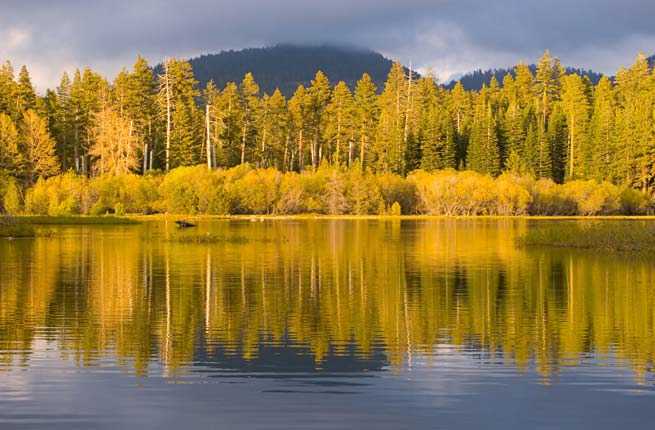
Lassen Volcanic National Park
California
This area may be best known for it’s volcanoes (all four types found in the world are represented here), but the remote wilderness of Lassen Volcanic National Park also serves up a splendid cornucopia of fall colors. The golden palette—courtesy of aspens, oaks, and sagebrush—paints a startling contrast to the crystal-blue lakes, giant lava pinnacles, steamy sulphur vents, and jagged craters.
Insider Tip: Weather is unpredictable at Lassen and fall temperatures can range from the high 70s to the low 30s.
PLAN YOUR TRIP: Visit Fodor’s Lassen Volcanic National Park Travel Guide
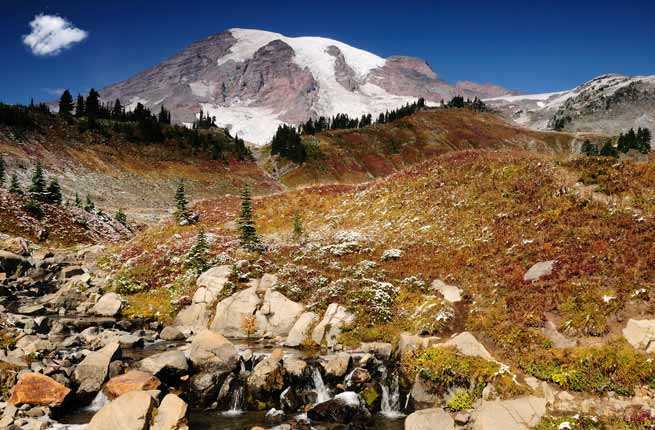
Mount Rainier National Park
Washington
Fall foliage at Mount Rainier National Park is very different than in the more eastern parts of the country, but just as spectacular. Starting in late September, every huckleberry bush, aspen, cottonwood, vine maple, elderberry, willow, and tamarack (western larch), bursts into hues of gold, amber, and crimson.
Insider Tip: The best fall color displays are between Sunrise and Chinook Pass, and in these areas: Bench and Snow lakes, Paradise area, Reflection Lakes, and Grove of the Patriarchs.
PLAN YOUR TRIP: Visit Fodor’s Mount Rainier National Park Travel Guide
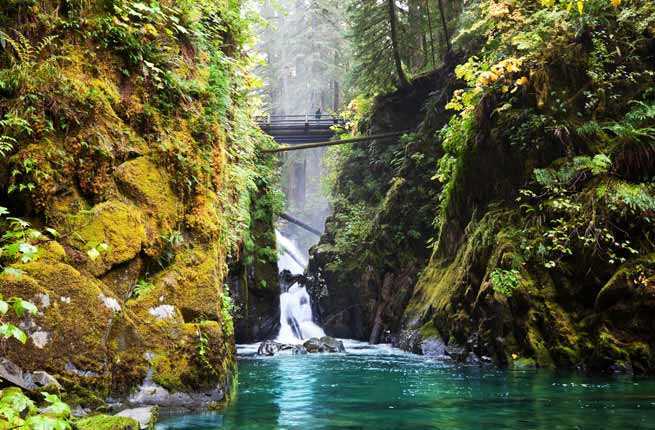
Olympic National Park
Washington
Fall colors are scarce at Olympic National Park, with only occasional splashes from maple trees among the evergreen trees. But there’s an even bigger draw in autumn—salmon spawning season, when you can watch Coho salmon leap up the Quillayute and Sol Duc rivers.
Insider Tip: For the best salmon viewing in October, head to the Salmon Cascades in the Sol Duc River. In November, take the Hoh Visitor Center nature trail leading to a small tributary of the Hoh River.
PLAN YOUR TRIP: Visit Fodor’s Olympic National Park Travel Guide

Redwood National Park
California
Redwoods, the tallest tree species on Earth, don’t change color in the fall, but that doesn’t diminish the experience. These are the planet’s most majestic forests, soaring more than 300 feet high. Visitors flock to the Redwood National Park in the summer, but come fall it’s deserted enough to spot a black bear, mountain lion, elk, or bobcat.
Insider Tip: Pacific gray whales pass along the redwood coast in fall and late winter on their way from Alaska to Baja. Catch a glimpse from the Crescent Beach Overlook.
PLAN YOUR TRIP: Visit Fodor’s Redwood National Park Travel Guide
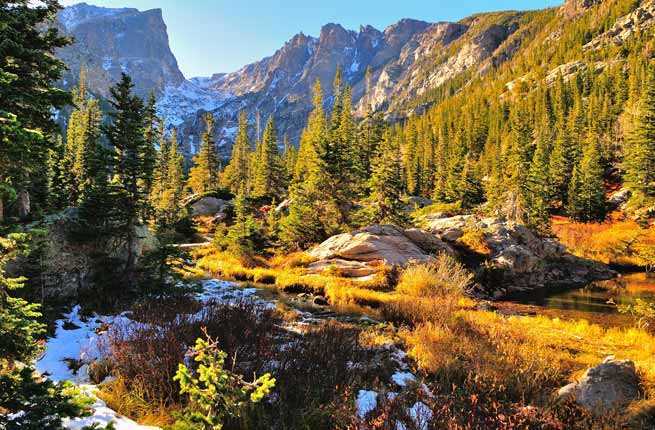
Rocky Mountain National Park
Colorado
The famous Trail Ridge Road in Rocky Mountain National Park tops out at over 12,000 feet, providing an exceptional vantage point to view the vibrant gold aspens. The park is dominated by a species known as the quaking aspen, which has a flat stem causing its leaves to quiver at the slightest breeze. The effect is mesmerizing in the sunlight.
Insider Tip: Animals abound in Rocky Mountain National Park year-round, but fall is the only chance to hear the bugle-like mating call of the elk, and spot a bighorn sheep.
PLAN YOUR TRIP: Visit Fodor’s Rocky Mountain National Park Travel Guide
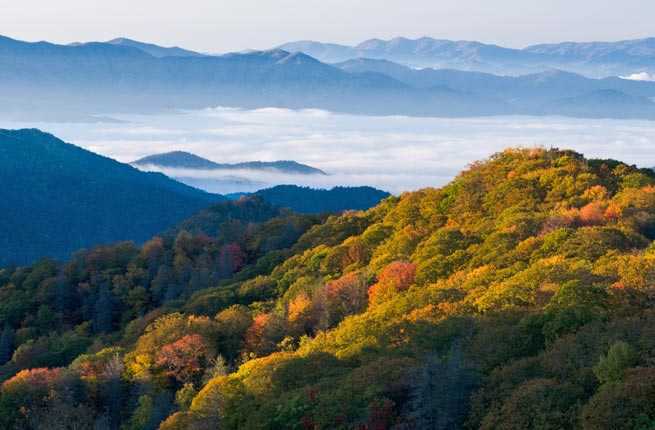
Great Smoky Mountains National Park
Where: Tennessee and North Carolina
Welcome to the Great Smoky Mountains National Park, home to the largest stands of old growth forests in the eastern U.S. Maples are the stars, with a supporting cast of poplar, birch, and oak. Expect jaw-dropping displays of yellows, oranges, reds, and even purples.
Insider Tip: Thanks to leaf-peepers, the month of October sees just as many visitors as the height of summer. Beat the crowds by coming during weekdays, or before 10:00 am.
PLAN YOUR TRIP: Visit Fodor’s Great Smoky Mountains National Park Travel Guide
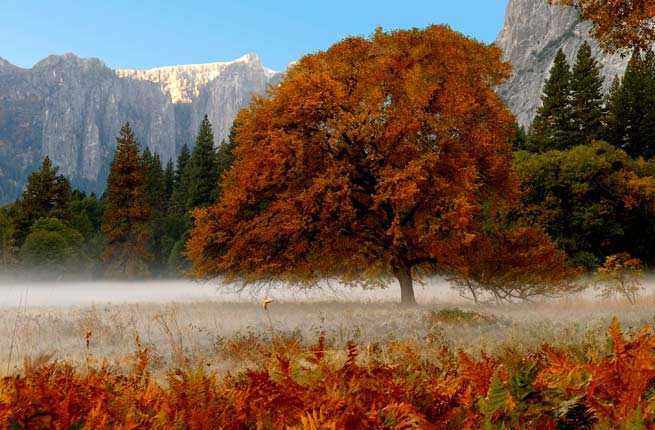
Yosemite National Park
California
The spectacular Yosemite National Park is mostly evergreen trees, and not known for its fall foliage. This makes it ideal for autumn visitors, who get the park’s normally overrun granite cliffs, ancient giant sequoias, and waterfalls practically to themselves in October and November.
Insider Tip: Water levels drop in the fall, and Yosemite Falls typically goes dry. Some of the park’s waterfalls, including Vernal, Nevada, and Bridalveil, run all year, just at a slower flow.
PLAN YOUR TRIP: Visit Fodor’s Great Yosemite National Park Travel Guide
